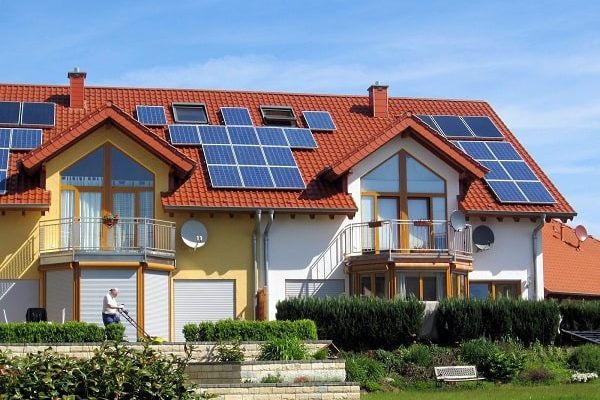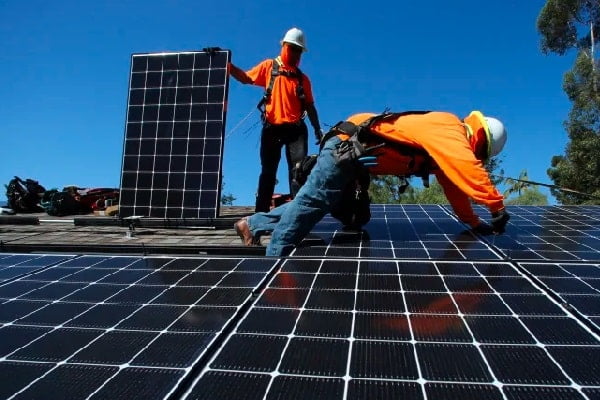Make the switch to renewable energy today and get the power you need to manage your home and run your business. Malaysia Solar Power offers an impressive range of solar panel units in Malaysia for residential and commercial use. Save on utilities and improve your way of living with the right solar system in Malaysia.
What size of the system should I install?
Before you decide to go ahead with a solar panel system, you need to grab hold of the following factors.
- Budget – the amount of money you want to invest in buying a system is a deciding factor when it comes to the size of the system
- Space on your rooftop or ground – how many solar panels can fit on your rooftop or the ground or piece of land determines the size of the system you should invest in
- Number of people in your property – if you have more people in your family or team (if you are a business) then you need a bigger system that leads to higher financial return
- Whether you own the property or not – logically speaking, you wouldn’t want to invest money in someone else’s property. So going solar is a great decision if you own the property
- For how long you will own your current property – If you don’t own your property the second point is to only go ahead if you plan on living at the same place for at least 5 years or more
How do I know how much ROI my solar investment will generate?
Although there’s an initial investment but considering the long-term benefits, going solar is a great option. Hiring a consultant is the best way to find the ROI however, you can calculate that using the formula: Solar Payback Period = Initial Net Investment / Yearly Benefit. Here the initial net investment is the cost of the installed solar panels.
How does having shading on my panel impact the solar energy my system would produce?
The shade you get when the sun goes down and by the time it rises up isn’t an issue because you get ample sunlight meanwhile. However, if a portion of your system will continuously be under shade then you should think well before getting your system installed. This implies considering positioning the panels on the roof so the shading doesn’t affect them or going ahead with making adjustments as needed when it comes to trees. In short, factor in whatever you’d do as an expense into your calculations.
If I choose to increase my system’s size in future, can my inverter take extra panels?
If you think you might want to add more panels then remember you can always choose to add another inverter instead of purchasing an over-sized inverter initially. The number of panels your inverter can take totally depends on its size.
Where are the components made?
While most of the inverters and panels are made in Asia followed by Europe, where the components are made doesn’t make a difference. It’s a matter of who is giving the warranty if your inverter or panel fails. So, who offers the warranty is one of the key questions you need to ask the installer.
How long has your company been in business?
The solar industry is relatively new. New installers are entering the market every day. So it’s very important you ask your installer about their company history and for how long they have been in business.
How many solar panel systems have you installed?
If you come across an installer who hasn’t installed any system yet then it’s a risk to go ahead with them. Not to say they won’t be capable or skilled but it’s better to play safe with your investment by going ahead with companies who have installed a good number of systems in your area.
Can you provide me with references in my area?
A valid and trustworthy installer will openly give you references so you can be satisfied before you make the final decision of hiring them as your installer. Not being able to provide the references indicates that they either aren’t legit or are brand new in the market with no experience.
Am I responsible for organizing connection to the grid?
The installer is mainly responsible for organizing this connection.
How do I maintain my system once it’s installed?
Since your PV system will last anywhere up to 25 years or more, the maintenance you need is primarily concerned with cleaning your solar panels if they accumulate dirt or debris. Also, let your electrician periodically inspect the wiring and electrical system. Additionally, you can get information about the monitoring devices for your system.
Does the inverter have communication software?
We definitely recommend having the option of communication software with your inverter. Not only it links wirelessly to your computer but also enables you to spot any problems as quickly as possible by keeping an eye on production.
Should I use an inverter with an input for each different facing section if the panels on my roof face towards slightly different directions?
You should definitely do this. In fact, consider it a must-do, or else your panels will only produce as low as the weakest panel at all times. This will result in greatly reducing your production.
What mandatory documentation will I receive before and after the installation?
Ensure that you receive your written documentation i.e. the quote and the contract outlines all the components that will be a part of your system. Ask for it and if the company doesn’t provide it consider it a red flag.
How long will it take from deposit to installation?
The timeline varies from installer to installer. It’s typically the shortest in the case of local installers. In general, the duration ranges from as little as two to three weeks up to three to four months. Contact us for the exact timeline.
Do the panel and inverter manufacturers have an office in Malaysia?
It’s important that the installation company will remain in Malaysia 10 years down the line. If not, you can’t realistically claim the warranty even if it needs to be after a few years because you wouldn’t be interested to call a company in another country.
If I need an off-grid storage battery in future for can I add it to my system? Will you manage this for me?
You can certainly add the battery in the future. You only require a new battery that will need to be interfaced with your current system. The installer you hire will simply check the specs of your existing system and the new battery or power source to give you a time and price quote. Normally the interfacing doesn’t take more than a few hours.
What Government rebates will I receive?
While Feed-in-Tariff (FIT) has been running for more than a decade to encourage the production of clean energy by homeowners, business owners, private investors, and the like, from November 1, 2016, Net Energy Metering (NEM) is in effect. With NEM, you get paid for selling the extra energy to the distribution licensee (TNB/SESB).



